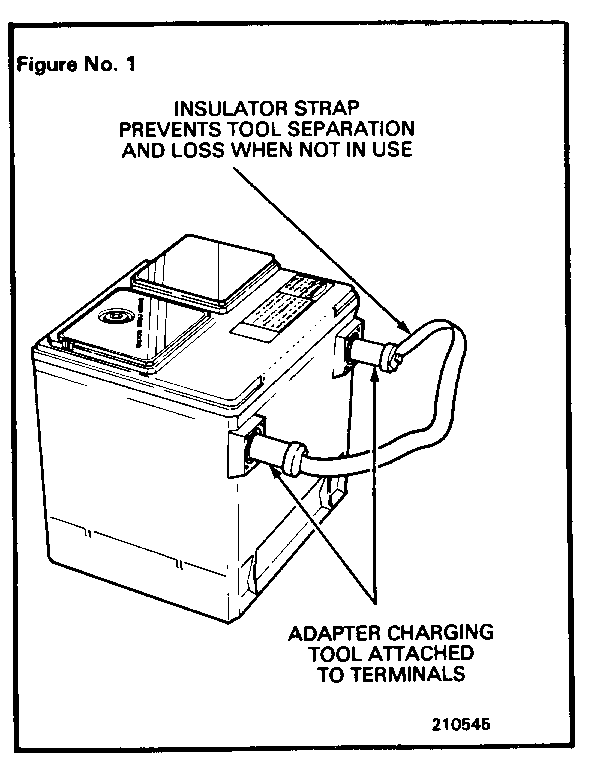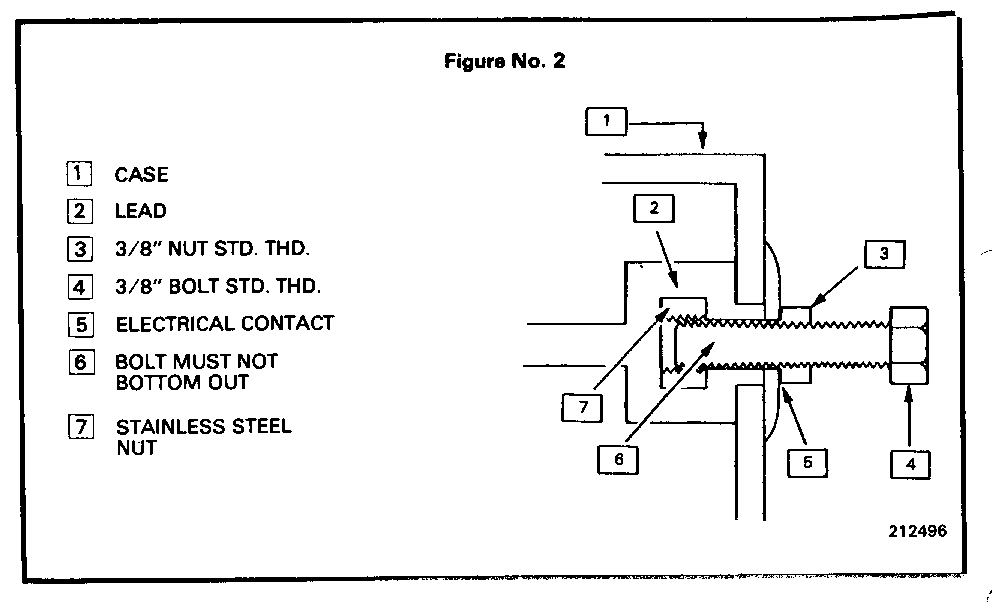SIDE TERMINAL ATTACHMENT FOR BATTERY CHARGING & TESTING

Sometimes batteries are difficult to charge when out of the vehicle. Often bolts are screwed into the side terminals of the battery to provide a terminal for the battery charger clamps. Similar connections are used for load testing. Bolts should not be used, since the mating threads inside the battery terminals provide a very small contact surface, which has high resistance to current flow.
The high resistance can prevent adequate charging current from reaching the battery, creating the appearance of the battery not accepting a charge, or at the least requiring longer charging time. It also explains why some batteries are called bad when they are load tested, but are obviously good batteries when checked with proper connections at the terminals.
There are two ways of connecting to the side terminals to charge a battery:
1. By use of an adapter charging tool (See Figure No. 1). The number of this tool is GM 1846855, or AC-Delco ST-1201. The adapter should be snugged up against the lead pads of the battery with pliers to keep resistance between the adapter and battery terminals at a minimum. This is the preferred method.
2. By the use of 3/8" bolt with standard threads (16 UNC) and 3/8" nuts with standard threads (See Flgure No. 2).
A. Screw 3/8" nut onto 3/8" bolt (1-1/2" or longer).
B. Using fingers, screw one bolt into each side terminal until it bottoms out, and then back off one full turn. (Do not tighten with wrench as bolts can be driven through case.)
C. Holding the bolt, screw the nut down on the bolt until the nut is against the battery terminal lead pad. Snug nut with pliers. (Do not overtighten as nut inside battery terminal could be pulled out.)
D. Attach the charger or tester leads to the 3/8" nuts and follow normal charging and testing procedures. The main charging or load test current will be carried through the lead pads of the battery terminals and not through the nuts inside the terminals.


General Motors bulletins are intended for use by professional technicians, not a "do-it-yourselfer". They are written to inform those technicians of conditions that may occur on some vehicles, or to provide information that could assist in the proper service of a vehicle. Properly trained technicians have the equipment, tools, safety instructions and know-how to do a job properly and safely. If a condition is described, do not assume that the bulletin applies to your vehicle, or that your vehicle will have that condition. See a General Motors dealer servicing your brand of General Motors vehicle for information on whether your vehicle may benefit from the information.
